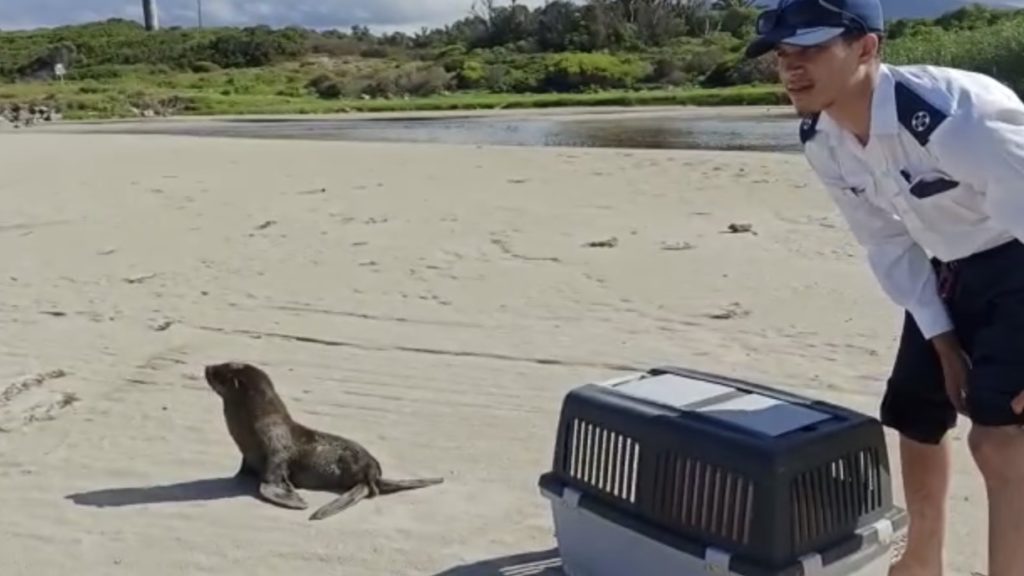Over the weekend, the SPCA’s Wildlife Team was alerted to a young seal on Strand Beach being harassed by the public. The team went to assist and moved the young seal to a safe place a little farther down the coast where it can rest and recover.
Also read: Cape of Good Hope SPCA arrests one dogfighter and rescues six dogs
Why not leave it where it is?
The Cape’s fur seals have a challenging time whenever there are rough sea conditions. Strong waves frequently wash young fur seals away from their colony rocks, where they have little chance of safely rejoining the colony.
They have no choice but to swim to shore, which could be many kilometres away. The seal will eventually wash up on the shore, worn out and in need of rest. Unfortunately, this usually results in them coming into contact with beachgoers who might not comprehend that the animal is simply attempting to rest and regain its strength before returning to the sea in an effort to locate its colony.
A common misconception is that the animal is stranded and needs assistance returning to the water. Some people will attempt to “help” by either dragging it back into the water, splashing water on it, letting their off-leash dogs chase it, or, worse, attempting to take a cute seal selfie with it. None of these actions is done with any consideration for the welfare of the animal.
What this animal really needs is to be left alone until trained help can arrive
It’s best to give any seal you see on the beach a wide berth because it might be exhausted, hungry, or sick. Make sure children are kept far away and that dogs are leashed (even a tired seal can deliver a nasty bite when feeling threatened or cornered).
Call your nearest SPCA, and the correct help will be sent.
Beached seals: What should you do?
In order to digest their food and regain their strength, seals spend a lot of time outside of the water. A beached seal could simply be resting, and there may not necessarily be anything wrong – so do not approach it under any circumstances.
Here are some signs to watch out for if you come across a seal that you believe is in distress:
- Malnutrition: Visible ribs, hips, and neck and/or wrinkled skin.
- Sick: Coughing, sneezing, or noisy, rapid breathing; possibly thick mucus coming from the nose; wounds or swellings, particularly on the flippers; cloudy eyes; or thick mucus around them.
- Entanglement: Caught in heavy commercial gear such as fishing lines, nets or wires.
SPCA contact details:
- Phone: 021 700 4158/9.
- After hours: 083 326 1604
- Email: [email protected]
Also read:
Picture: Screenshot: Cape of Good Hope SPCA / Facebook






